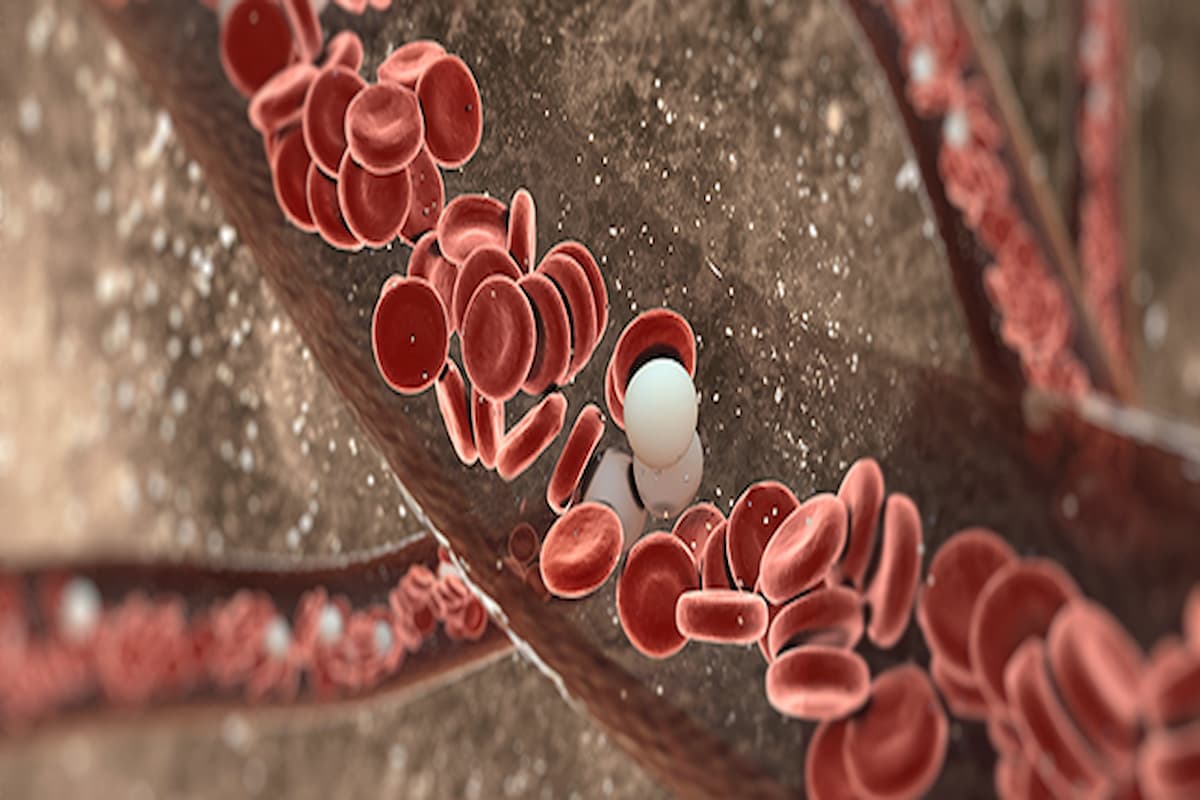Golidocitinib Shows Antitumor Activity, Safety in Relapsed/Refractory PTCL
Treatment with golidocitinib meets the primary endpoint of ORR as well as the secondary endpoints of PFS and safety in the phase 2 JACKPOT8 trial.
"Golidocitinib is a selective JAK1 inhibitor with oral administration and a high selectivity to JAK1, more than 200-fold [compared with] JAK2, JAK3, TYK2, and favorable pharmacokinetic properties. This is the first JAK1 inhibitor developed for [patients with] T-cell lymphomas entering a pivotal study," said Yuqin Song MD, PhD, preseting author and an oncologist at the Peking University Cancer Hospital and Institute in Beijing, China.

Golidocitinib, a selective JAK1 inhibitor, resulted in antitumor efficacy and acceptable tolerability in patients with refractory or relapsed peripheral T-cell lymphoma (PTCL), according to findings from the phase 2 JACKPOT8 study (NCT04105010) presented at the 2023 American Society of Hematology (ASH) Annual Meeting and Exposition.
Among response-evaluable patients (n = 88) treated with golidocitinib, the objective response rate (ORR) per independent review committee (IRC) was 44.3%, including a 23.9% complete response (CR) rate and 20.5% partial response (PR) rate. Patients also experienced stable disease (19.3%), progressive disease (22.7%), and were not evaluable (13.6%). Additionally, 29.5% of patients achieved a radiological CR but 5 were evaluated as PRs due to lack of bone marrow confirmation. Seventy percent of patients who were evaluable for tumor size change (n = 70) experienced target lesion size reduction by IRC assessment.
“Due to the lack of standard treatment [options], the prognosis of [patients with] refractory or relapsed PCTL is very poor with a 5-year survival rate lower than 30%,” Yuqin SongMD, PhD, an oncologist at the Peking University Cancer Hospital and Institute in Beijing, China, said during the presentation. “Golidocitinib is a selective JAK1 inhibitor with oral administration and a high selectivity to JAK1, more than 200-fold [compared with] JAK2, JAK3, TYK2, and favorable pharmacokinetic properties. This is the first JAK1 inhibitor developed for [patients with] T-cell lymphomas entering a pivotal study.”
JACKPOT8 was a multinational trail that enrolled patients with locally diagnosed relapsed/refractory PTCL who were at least 18 years of age, or at least 19 years if they were Korean. Patients had an ECOG performance status of 2 or less, adequate organ function, and measurable disease. Patients with anaplastic large cell lymphoma (ALCL) needed to have undergone prior treatment with CD30 targeted therapy.
Patients received golidocitinib 150 mg daily in 21-day cycles, which was the recommended phase 2 dose determined in the phase 1 portion of the trial, JACKPOT8 Part A. Tumor assessment occurred on day 1 of cycle 3 and then every 3 cycles until disease progression, intolerance to treatment, or withdrawal from the trial. Song noted that from February 2021 to October 2022, 104 patients were enrolled in the study, and all had received at least 1 dose of golidocitinib.
The primary end point was ORR per IRC. Secondary end points included CR rate, duration of response (DOR), progression-free survival (PFS), time to response, and safety.
At baseline, the median age was 58 years (range, 20-78). Most patients were males (64.4%), had an ECOG performance status of 1 or more (55.8%), and did not have bone marrow involvement (80.8%). The median number of prior lines of therapy was 2 (range, 1-3) and all patients received prior chemotherapy; additional systemic therapies received included a HDAC inhibitor (48.1%), brentuximab vedotin (Adcetris; 12.5%), and 1 patient received an ALK inhibitor. Patients had PCTL not otherwise specified (49.0%), angioimmunoblastic T-cell lymphoma (AITL; 15.4%), ALCL (10.6%), natural killer/T-cell lymphoma (3.8%), central confirmed non-PTCL (3.8%), and other (8.7%) subtypes. Nine patients had disease of which the histology was unable to be confirmed.
Additional findings demonstrated that the median DOR was 20.7 months (95% CI, 17.6-not evaluable [NE]) per IRC assessment; 53.8% of patients were still responding at the August 31, 2023, data cutoff. The median PFS was 5.6 months and median overall survival was 19.4 months, with 52.3% of patients alive at the data cutoff. The median DOR among patients with a CR or a PR was 20.7 months (95% CI, 17.6-NE) and 3.9 months (95% CI, 2.1-NE), respectively.
Results from a subgroup analysis revealed that patients experienced tumor responses regardless of age, sex, ECOG performance status, bone marrow involvement, LDH levels, or prior anti-lymphoma therapies. Subgroups with the highest ORRs included patients with natural killer/T-cell lymphoma, those without LDH elevation at baseline, females, and those with AITL; rates were 66.7% (95% CI, 9.4%-99.2%), 59.5% (95% CI, 43.3%-74.4%), 58.1% (95% CI, 39.1%-75.5%), and 56.3% (95% CI, 29.9%-80.2%), respectively.
In terms of safety, most patients experienced a treatment-related adverse effect (TRAE) of any grade (92.3%). Additionally, patients experienced a TRAE of grade 3 or higher or a treatment-related serious AE at rates of 59.6% and 24.0%, respectively. TRAEs leading to dose interruption, reduction, or discontinuation occurred at rates of 38.5%, 7.7%, and 8.7%, respectively. One patient experienced a fatal TRAE.
Any-grade TRAEs included thrombocytopenia (62.5%), leukopenia (57.7%), neutropenia (56.7%), anemia (41.3%), lymphocytopenia (30.8%), increased aspartate aminotransferase (28.8%), increased alanine aminotransferase (25.0%), and increased blood creatine (18.3%). Song noted that most TRAEs were hematological events that were reversible or clinically manageable.
Reference
Song Y, Malpica L, Cai Q, et al. Golidocitinib in treating refractory or relapsed peripheral T- cell lymphoma: full analysis of the multinational pivotal study results (JACKPOT8). Blood. 2023;142(suppl1):305. doi:10.1182/blood-2023-172962